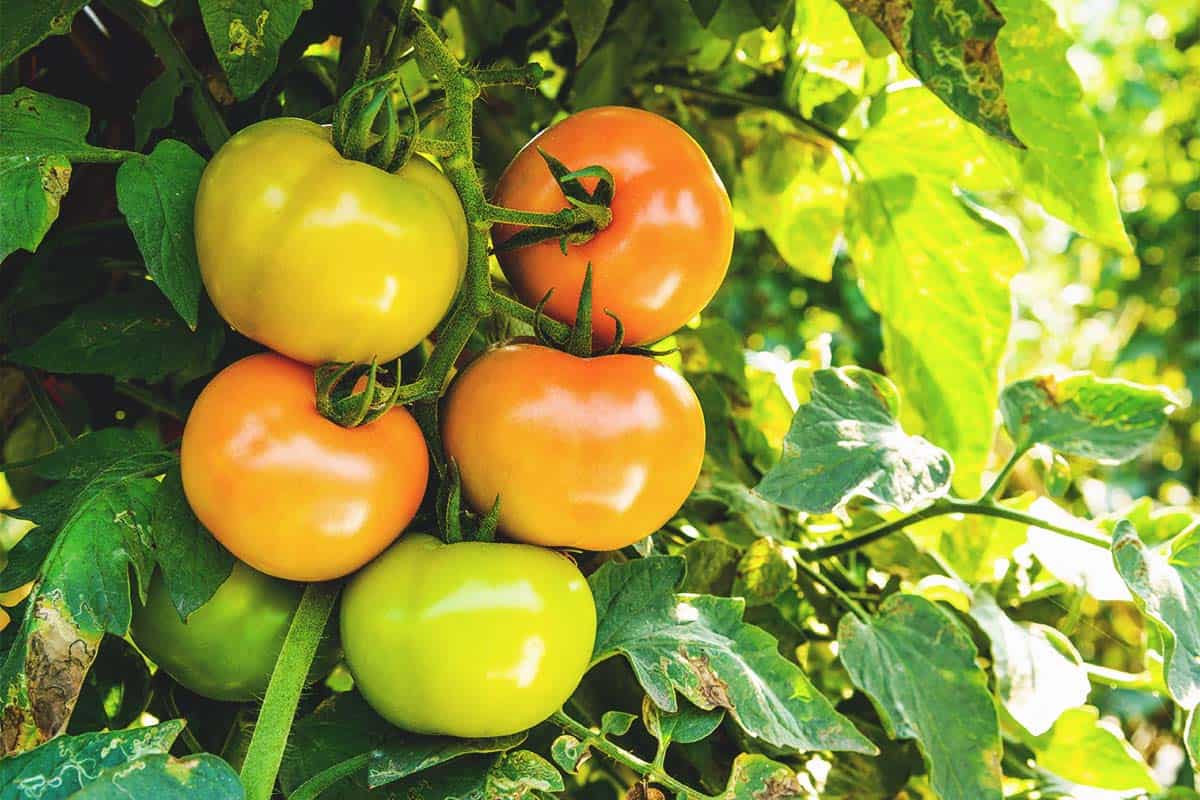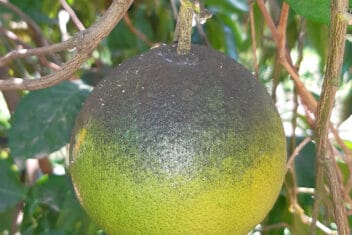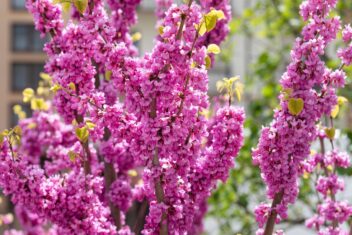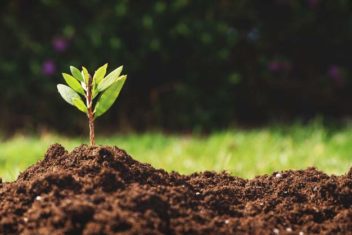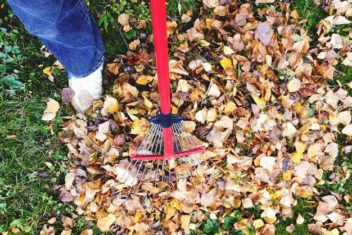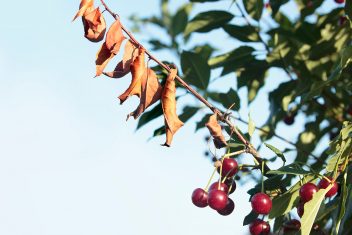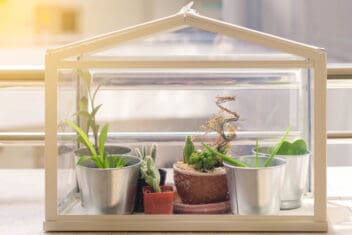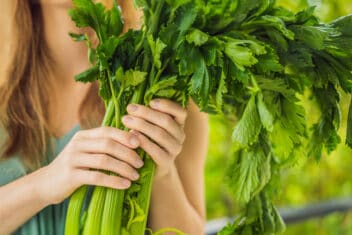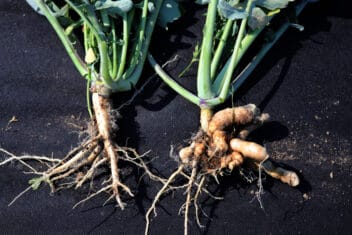It’s only been two generations since we transitioned from most people growing and raising their own food to most people not even knowing how food grows. Unfortunately, even in that short time, so many garden hacks that used to be common knowledge have been forgotten.
I’ve spent the last six years focused on trying to regain that knowledge. Along the way, I’ve collected lots of useful information on making the most of my vegetable garden. I’m about to share some of the garden hacks I have learned to help you fast-track your useful food production.
Before we get into those details though, these recent posts can also guide you to greater self-sufficiency in a hurry. If you have a few extra minutes, please check out these posts too!
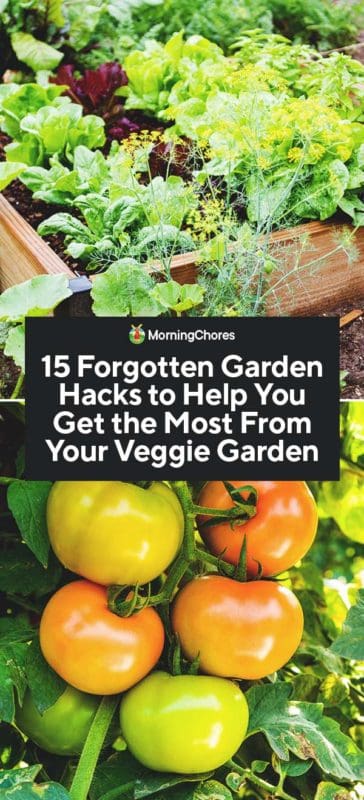
- 20 Self-Sufficiency Hacks You Can Implement Right Now
- Gardening Crash Course: Grow & Harvest Your First Vegetable in Under a Month
- 6 Hacks for a Faster Fruit Production at Your Home Garden
Now, let’s get into some of those garden hacks and insights to help you have an extra productive garden.
Sunshine Tomatoes
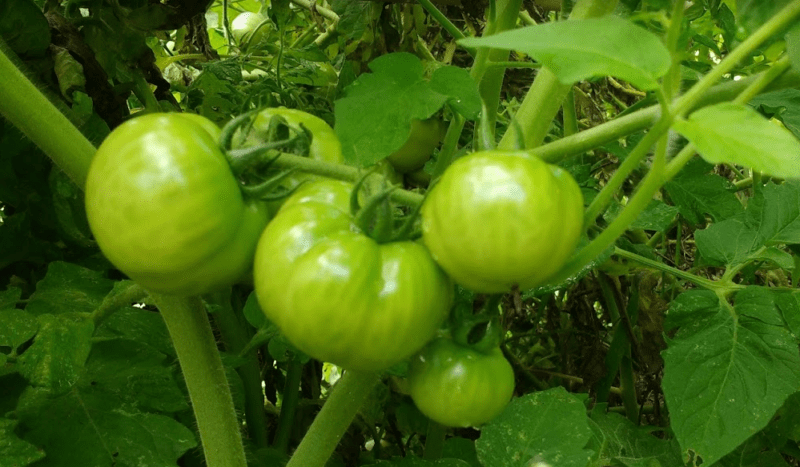
Tomatoes are about the most popular crop you can grow in a home garden. But when it comes to increasing food self-sufficiency, tomatoes have very few calories. So, they aren’t going to keep you strong or fill your belly. Yet, there’s one big reason I grow tomatoes and eat them like crazy!
1. Tomatoes Provide Natural Sunscreen
Tomatoes contain high quantities of a compound called lycopene. Studies on lycopene have shown that when consumed regularly, tomato consumption can boost your natural UV protection by 30%. The key is you have to eat a lot on a daily basis.
Gardeners have probably instinctively known this for hundreds to thousands of years. I noticed it before I read the studies. But I also learned that tangerine tomatoes may offer significantly more benefits than red varieties. So, branch out and try the yellow and orange varieties too.
I grow cherry and grape tomatoes along many of my paths and pick and eat them as they ripen. There’s nothing tastier than a tomato right off the vine. Since they are so low in calories, you can eat as many as you want!
2. Make Clones
Another tomato secret is that you can increase your tomato production by cloning your best plants. Just set a pot of good soil next to your healthiest and most productive plant. Select a young vine that is not yet flowering and press part of its stem into the soil. Use a rock or other weight to hold it in place.
Water regularly until roots form. Once they do, cut the vine away from the parent plant. Viola, you have a new tomato plant that is identical to the one you cloned from.
The benefit of this process is that you make copies of plants you know are well-adapted to your garden. Those cloned plants also start producing much faster than seed started plants. I use this technique to succession plant my tomatoes until mid-July to keep up a constant harvest until the first frost.
3. Can Smartly
Heirloom tomatoes are one of the easiest vegetables to can without risks of botulism because of their naturally high acidity. Unfortunately, many modern-day varieties have been bred for sweetness and low acidity and may not be safe to can.
Luckily, you can increase acidity by adding add ¼ teaspoon citric acid to each pint of tomatoes before closing the lid to can them. Then, add a little sugar when you open the can to cancel out the acidity.
4. Go Green
End of season tomatoes can be slow to ripen or may succumb to frost before they do. Instead, make green tomato sandwiches. Or, cook them with sugar and spice to make a pie that most people think tastes just like apple pie.
Potent Potatoes
Potatoes are a crop that many new gardeners avoid growing. Stories of the Irish potato famine and all the rules for planting make it seem like a risky option. Yet, the truth is, potatoes are easy to grow if you know a few tricks.
5. Grow Potato Stems
Potatoes aren’t roots, they are fattened underground stems called tubers. This isn’t just a technicality. Using that knowledge to grow potatoes will make all the difference in your garden.
I recently wrote a post that goes beyond the basic planting guide information and gets into the deep secrets for potato growing. Read that post along with our potato growing guide and you’ll have more potatoes than you know what to do with in no time!
6. Perennialize Your Potato Harvest
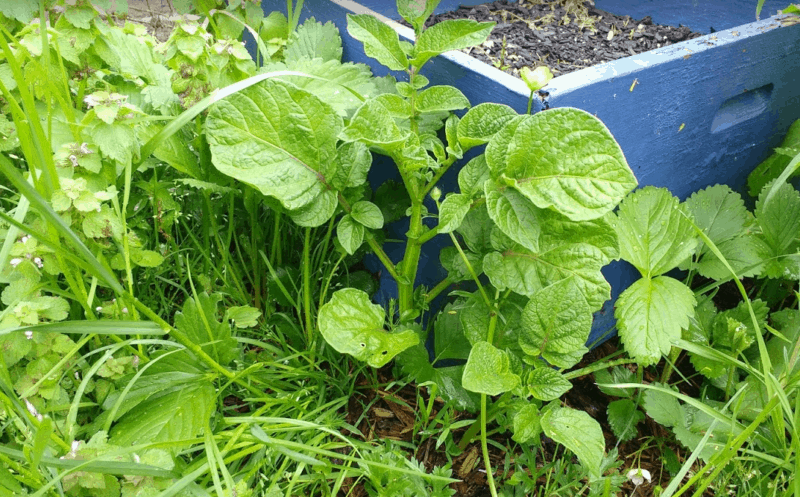
If you live in US hardiness zones 6-9 and have excellent vegetable garden soil, you don’t have to plant potatoes every year to get a harvest. You can just leave one of your deeper planted potatoes unharvested this year to become your seed for next year.
Deep-planted potatoes are often slow to emerge in spring because growth is dependent on soil temperatures. So, just cover your potato area with plastic or mulch to warm the soil faster.
Your potato plant tops will poke through a few weeks earlier due to that added warmth. If any don’t come up, you still have time to plant more using the more traditional hilling method.
In my case, I grow potatoes in a bed mixed with all sorts of other perennial vegetables such as asparagus, artichoke, and more. I apply mulch in February and the potato greens usually poke through by late March.
Other Plants to Perennialize
There are a lot of other plants that gardeners tend to use as annuals that can easily be perennialized. Here are some to consider.
7. Perennialize Leeks
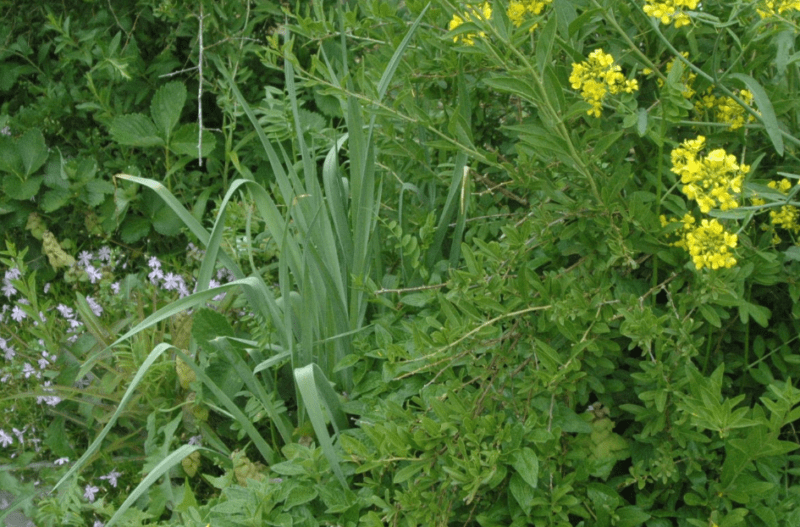
Leeks are one of the tastiest alliums out there. Unfortunately, they take about 110-130 days to grow to a first harvest if you plant them as an annual. Instead, I grow them to maturity, then I harvest only the tops.
If you leave the roots and a bit of the crown in place, the plant tops will re-grow for repeated harvests. In winter, before your temperatures drop make your last harvests and cover the crowns with a heavy layer of compost or mulch or use a cold frame to protect them.
This trick works down to about zone 4. Additional protection may be needed in colder climates.
Also, if you let your leeks flower occasionally, they’ll self-sow and make more leeks. So you can easily turn a few leeks into a big patch in a few years.
8. Perennialize Hardneck Garlic
Hardneck garlic puts up garlic scapes. These are unopened flower stakes that are delicious to eat. Most people consider them a byproduct of the garlic bulb. However, you can also grow garlic just for the delicious scapes.
All you need do is plant your hardneck garlic in a permanent location. Then grow it like you would your asparagus. Top the area off with a little compost annually. Keep it watered in periods of drought.
Your first year, you’ll get one scape. In the second year, you’ll get about 10-13 (the number of cloves the bulb makes). Then next year, you can get 60-100. The scapes are a little smaller than when grown as singles, but also more tender.
The garlic greens are also edible when young. If you harvest them in early spring, they still have time to re-grow and flower in early to mid-summer. I grow my scapes near my fruit trees because garlic is also a natural pest repellent for voles.
Garlic is cold-hardy to about -30℉ naturally. So, in many climates, you won’t even need to protect these plants over winter.
Amazingly Productive Vegetables
There are a lot of plants that are much more useful than you’d expect based on how they are marketed in the grocery store. At home, you can put the entire plant to use and double your yields. Here are some plants that new gardeners often fail to make total use of.
9. Can’t beat beets!
Beets from the grocery store are primarily used for their roots. At home, though, you can eat the tops too. They make a perfect substitute for spinach.
Also, beets are much more cold-hardy than their leafy cousin Chard. In fall and winter, you can actually grow beets just for their greens. Even if the greens die back, as long as the root doesn’t rot, they’ll come back again on the next warm day.
I’ve kept beets growing for greens with no cover down to 5℉. With cover, they can even take colder.
10. Grow Repeat Harvest Greens
Those loose heading greens like bok choy, Chinese cabbage, broccoli, lettuce, and more can all be harvested as heads. Then, as long as you leave the root and a small portion of the crown in the ground, they will regrow more small heads that can be harvested multiple times before the plant gives up growing.
11. Grow Herbs and Veggies as Spice
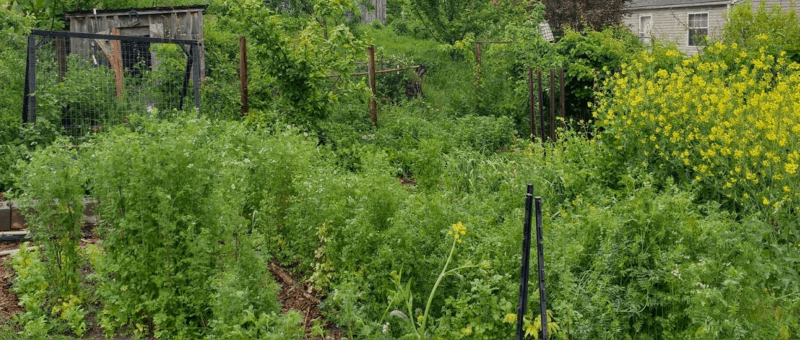
There are also a lot of vegetables and herbs that will produce spice if you allow them to seed. Dill, for example, is grown for its leafy greens. But once it flowers, let it keep on growing it for its spicy seeds.
Celery, especially leaf celery, will seed in its second year in mild climates. Or you can grow it in a pot and bring it indoors when temperatures are below 40℉ to keep it alive through winter.
Cilantro left to flower produces abundant coriander seed. Leaf fennel, which is exceptionally cold hardy, produces fennel seeds in its second year.
Leaf mustard left to flower and seed makes brown mustard seed. These can be used for rustic condiments or popped like corn to flavor curries. The seeds can also be pressed into oil.
12. Grow Sweet Potato Greens
Some people just don’t have enough warm season to grow sweet potato tubers. But the greens are delicious too. They grow prolifically in warm weather and can be harvested similar to Malabar spinach as a great substitute for cooked spinach. Or, you can use them in salads.
Even though you won’t get lots of large cure-worthy winter storage tubers if you cut all the greens, you may get lots of little finger tubers that you can use like fingerling potatoes fresh from the garden too!
Also, just like tomatoes, you can increase your number of sweet potato plants by cloning.
13. Rapini Anything
Rapini vegetables sell like hotcakes at the farmers market. Those flowers and the tender stalks make them a tasty, fine-textured treat. Some people will buy seeds for rapini to grow at home. But you can actually rapini all sorts of leafy greens.
Mustard, radish, kale, bok choy, cabbage, and more are all yummy rapini style. Just start those plants a few weeks before warm weather.
Water regularly until they have good leaf development and thin stalks. Then, deprive them of water. The lack of water and warming conditions will make those healthy plants flower.
Then you can harvest and cook the still tender plants with flowers rapini style. This is a great way to use old seeds or fill garden gaps between seasons.
Grow Perennials as Annuals
There are also a lot of vegetables we think of as perennials that you can grow as annuals.
14. Grow Artichokes in Cold Climates
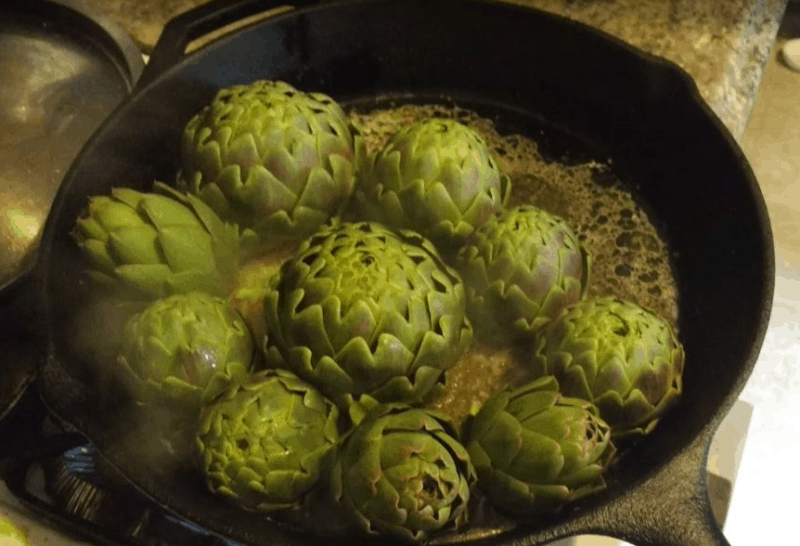
If you start artichoke plants indoors in pots in late January or early February, you can have artichokes to harvest by September or October. These plants have a deep taproot. So, use a deep pot.
Plant them outside after the risk of frost has passed. Just be careful not to damage the taproot when transplanting. Artichoke’s close cousin cardoon can also be similarly grown. Then, continually harvest stalks until fall.
15. Grow Horseradish as an Annual
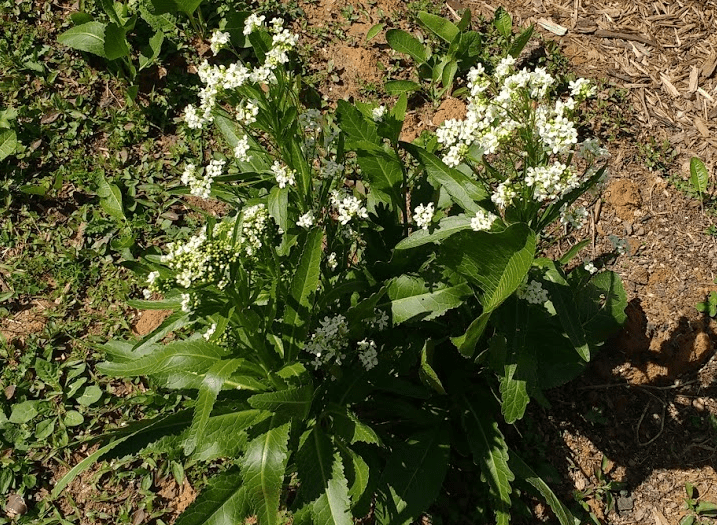
A lot of people fear growing horseradish because of its extensive root system. But if you grow it as an annual, your risks are minimal. Just dig up your entire horseradish bed as you do potatoes or sweet potatoes to harvest every bit. The small pieces are also perfect for preserving too.
Also, horseradish leaves taste wonderful. So, feel free to harvest a few of those too. Plus, if you do decide to let your horseradish go wild in your edible landscape, it’s got beautiful fragrant flowers as well.
Get-The-Most Approach to Gardening
Growing vegetables at home is nothing like buying them from the grocery store. There are so many fresh, tasty options and ways to reduce waste and increase production even in small spaces.
Each time you grow something new, challenge yourself to go beyond the basics of how to plant it and get into the intricacies of all the ways you can use it. By doing that, your garden will be so much more productive than you ever imagined!
